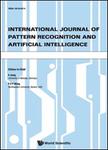版权所有:内蒙古大学图书馆 技术提供:维普资讯• 智图
内蒙古自治区呼和浩特市赛罕区大学西街235号 邮编: 010021

作者机构:Yonsei Univ Dept Comp Sci Seoul 120749 South Korea
出 版 物:《INTERNATIONAL JOURNAL OF PATTERN RECOGNITION AND ARTIFICIAL INTELLIGENCE》 (国际图形识别与人工智能杂志)
年 卷 期:1998年第12卷第3期
页 面:311-334页
核心收录:
学科分类:08[工学] 0812[工学-计算机科学与技术(可授工学、理学学位)]
主 题:computer vision parallel processing SIMD multiprocessor performance model
摘 要:An approach for designing a hybrid parallel system that can perform different levels of parallelism adaptively is presented. An adaptive parallel computer vision system (APVIS) is proposed to attain this goal. The APVIS is constructed by integrating two different types of parallel architectures, i.e, a multiprocessor based system (MBS) and a memory based processor array (MPA);tightly into a single machine. One important feature in the APVIS is that the programming interface to execute data parallel code onto the MPA is the same as the usual subroutine calling mechanism. Thus the existence of the MPA is transparent to the programmers. This research is to design an underlying base architecture that can be optimally executed for a broad range of vision tasks. A performance model is provided to show the effectiveness of the APVTS. It turns out that the proposed APVIS can provide significant performance improvement and cost effectiveness for highly parallel applications having a mixed set of parallelisms. Also an example application composed of a series of vision algorithms, from low-level and medium-level processing steps, is mapped onto the MPA. Consequently, the APVIS with a few or tens of MPA modules can perform the chosen example application in real time when multiple images are incoming successively with a few seconds inter-arrival time.